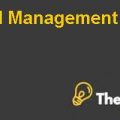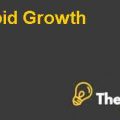Leadership: Overview
Leadership is one of the most important concepts in the modern business world and organizations that want to sustain in this complex and competitive business arena are in deep search of good and effective leadership. The concept of leadership is quite old and is being transformed with the passage of time. In the past, a leader was supposed to lead a team or a group of people and guide them to the right direction but the methods used were different. Therefore, during all these years of research and synthesis on the topic different authors have presented different meanings for the concept.
Leadership is not just a phenomenon, but the definition of the concept is exceeding the limits and has over ruled many definitions that have been presented in the past. Leadership is the process of guiding a group of people in a complex situation and helping them out in reaching a secure and safe option. This is what leadership is being perceived by most of the people but some have argued that the concept is more than just guiding and helping. It can be said that different people have different perceptions and this is what happens when defining leadership as well.
Leadership is the responsibility that a person is awarded with in order to transform a group of people and embrace their self-belief and confidence, guiding them towards a sustainable and essential change in their life. It has been said that leadership holds essential role in reaching a more secure phenomenon but managing to hold people different perceptions at one place quite effectively and managing them to produce fruitful and effective results can be referred as an effective leadership.
Leadership in Organizations
Leadership is often confused with management and send as many as the backbone of an organization and imperative in bringing about change within a company. Leaders have the broader vision for the long term and view things from a more holistic and bird view aspect while the managers are the ones who translate that vision into practice. There is no specific definition of leadership, but one famously quoted is by Porter, who defines a leader as anyone who has followers. This definition is quite general and a simple and very static definition of a leader can be derived from this definition.
In light of this definition presented by Porter, one thing is obvious that being a leader it is essential to have a number of followers or a group to lead without which a leader will not have a responsibility or a job to perform. According to Porter, the person with followers is only regarded as a le4ader which clearly entails that a leader has a strong dependency over the followers without whom he has nothing to prove. This entails that leadership prevails only when a responsibility is there and people to follow.
However, it has been viewed that in the changing business world the role of leadership has grown or increased drastically. On the other hand, the past concepts in organizations referred leaders as managers but the difference is quote apparent. The difference between a manager and a leader becomes more apparent as a manager is one of the followers of a leader. This difference is quite important and cannot be ignored as the places at which the leader and the manager stands are totally different and are in opposite direction.
There is a long list of traits, which leaders are deemed to have to possess in order to differentiate between the good leaders and the bad leaders which is not exhaustive. The most vital traits include being able to transmit his or her vision to the followers and be able to deploy and delegate skills effectively. Followers hold key position in shaping or building a leader and the responsibilities of a leader towards them are the key to develop significant traits. (JEFFREY D. FORD, 2008).
One of the most important and difficult leadership responsibilities is leading the change. And understanding change has become quite complex which makes the implementation of change further difficult. However, in order to grow it is vital for organizations to change readily as the concepts of business are changing rapidly. In this scenario, the organization must have the capacity to assimilate change and must have efficient and pro-active leaders to guide that change in the organization...............
This is just a sample partial case solution. Please place the order on the website to order your own originally done case solution.













